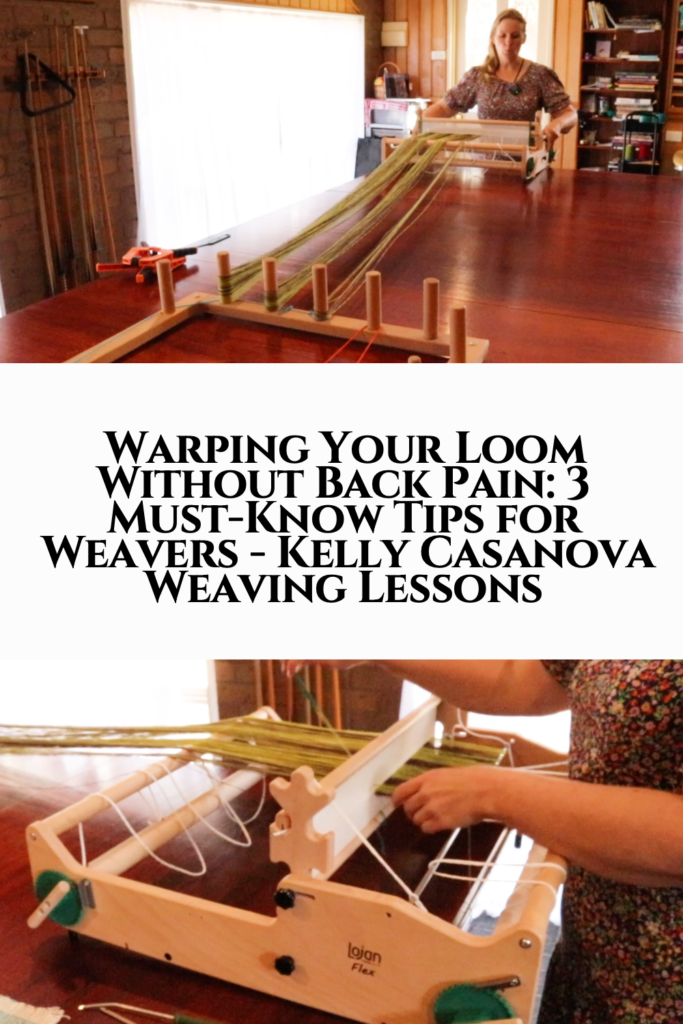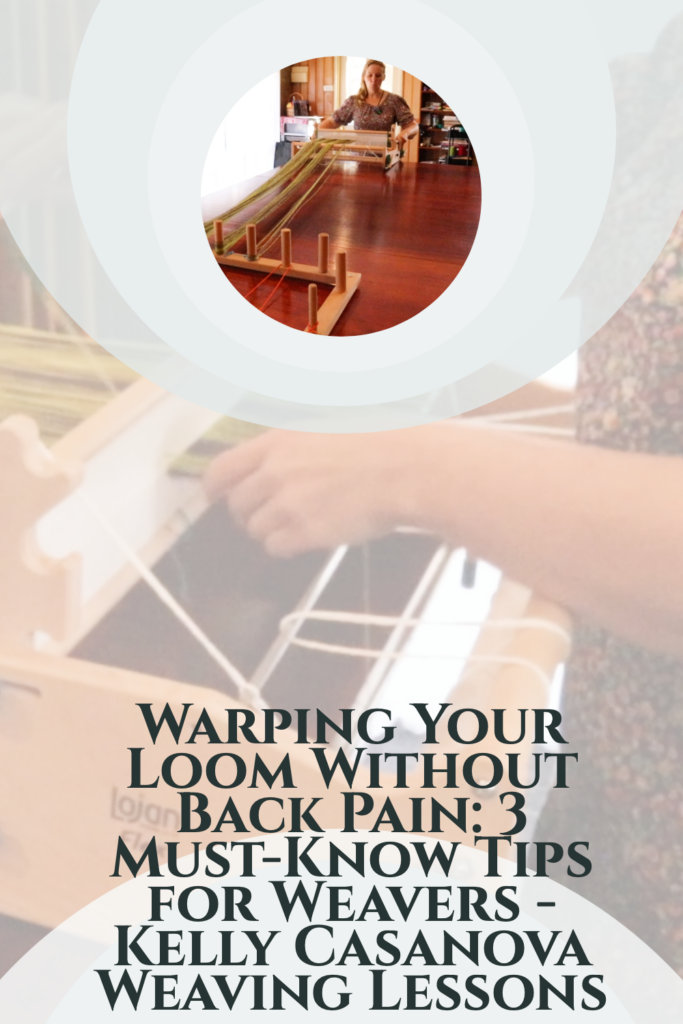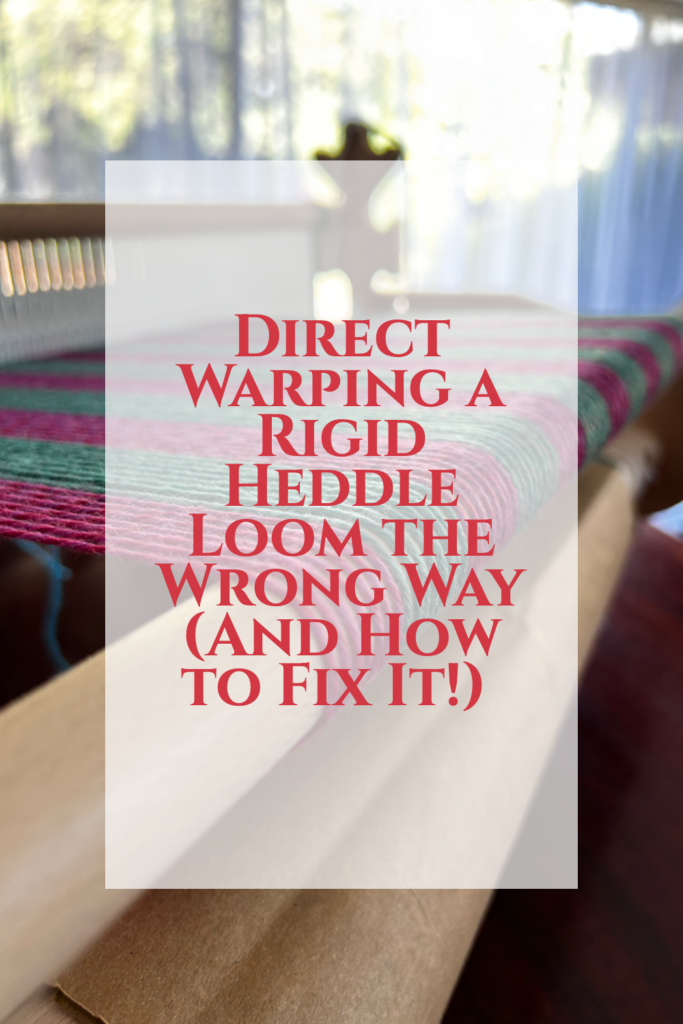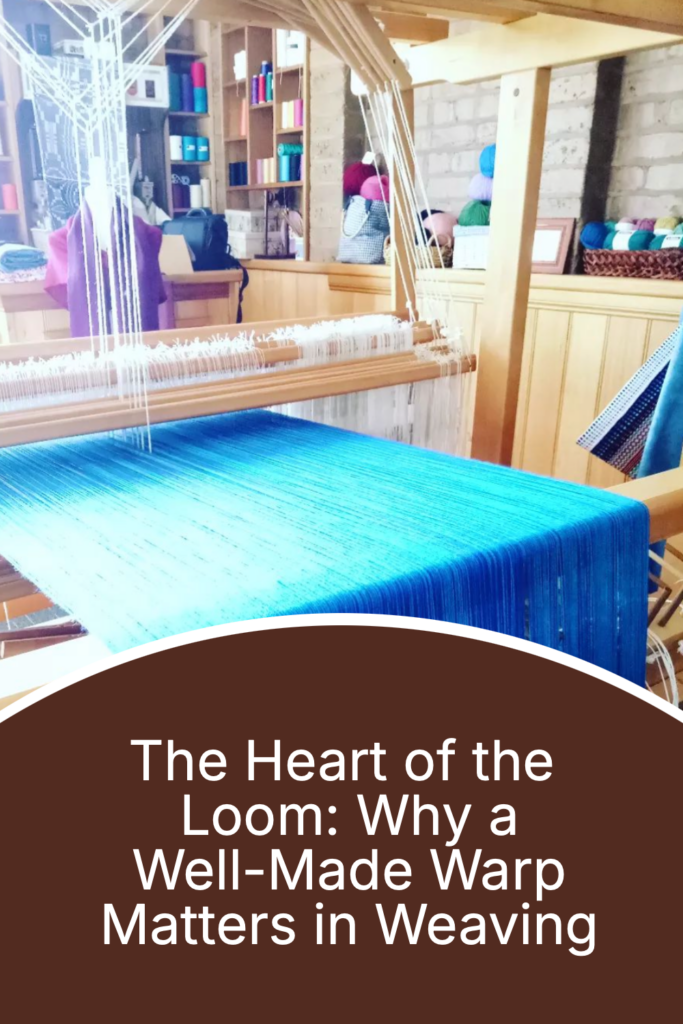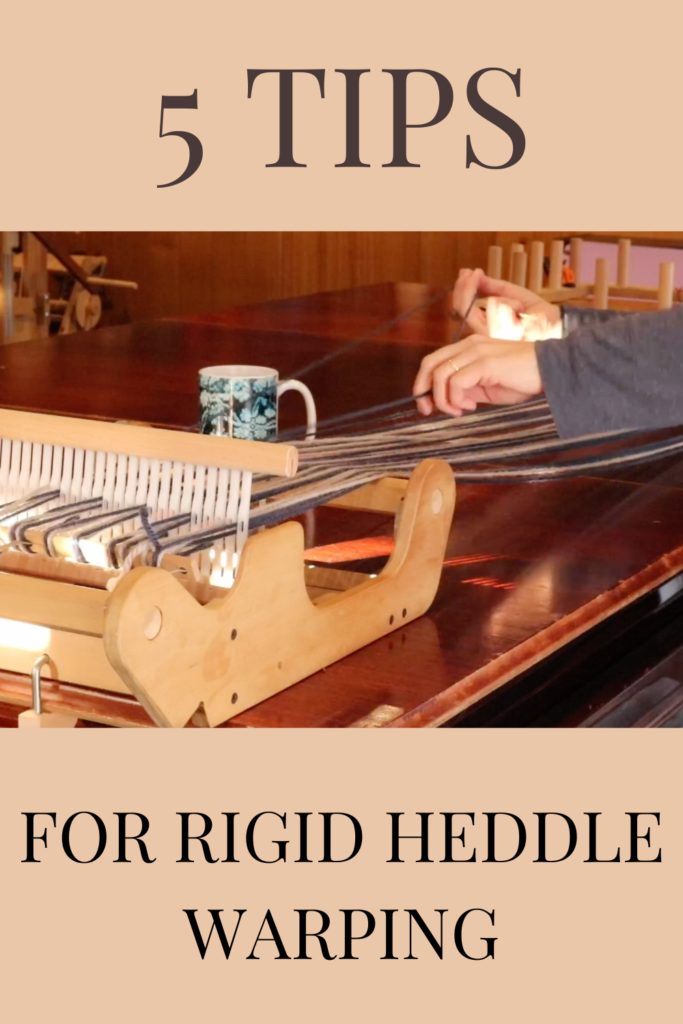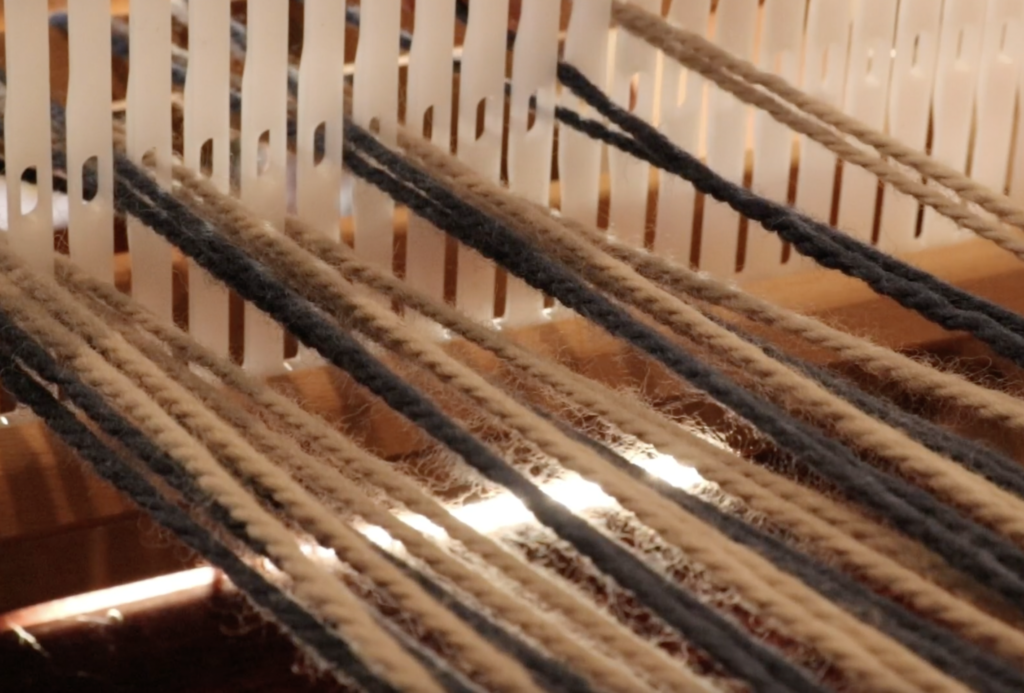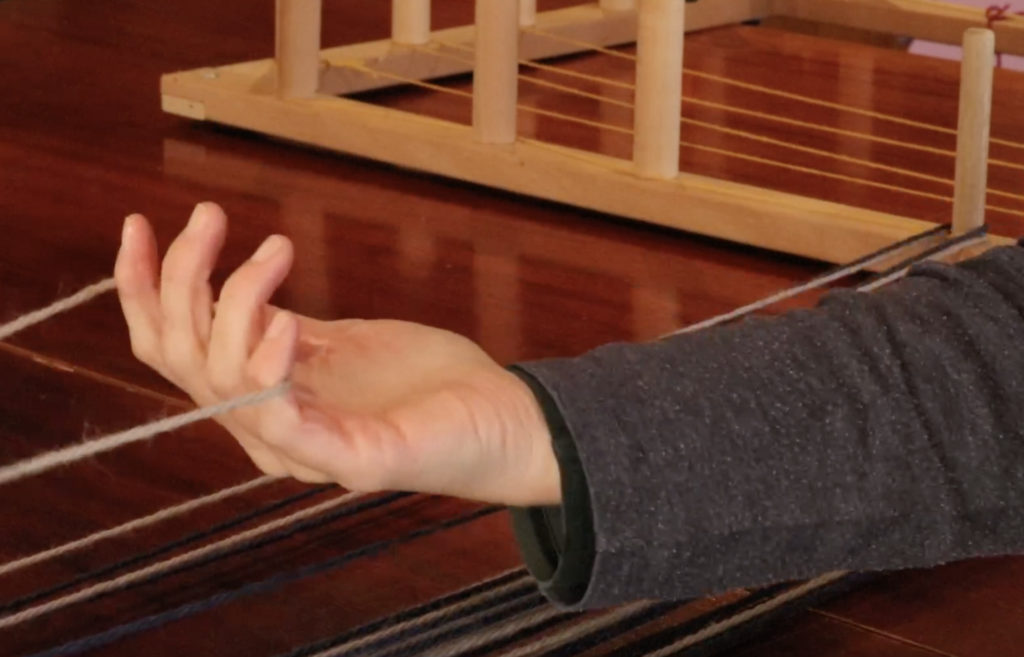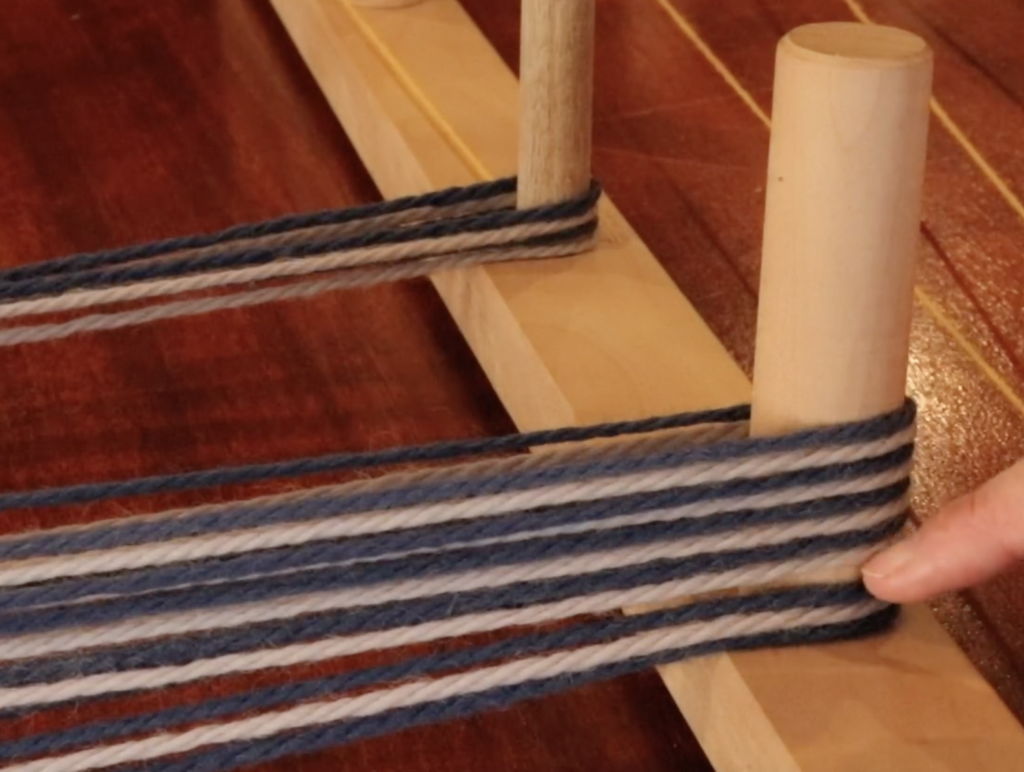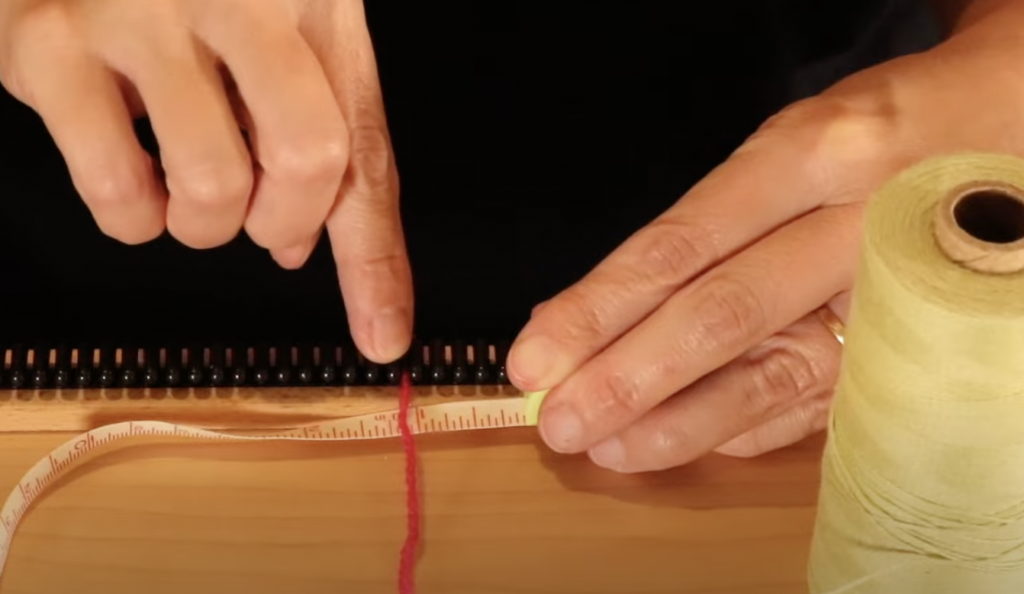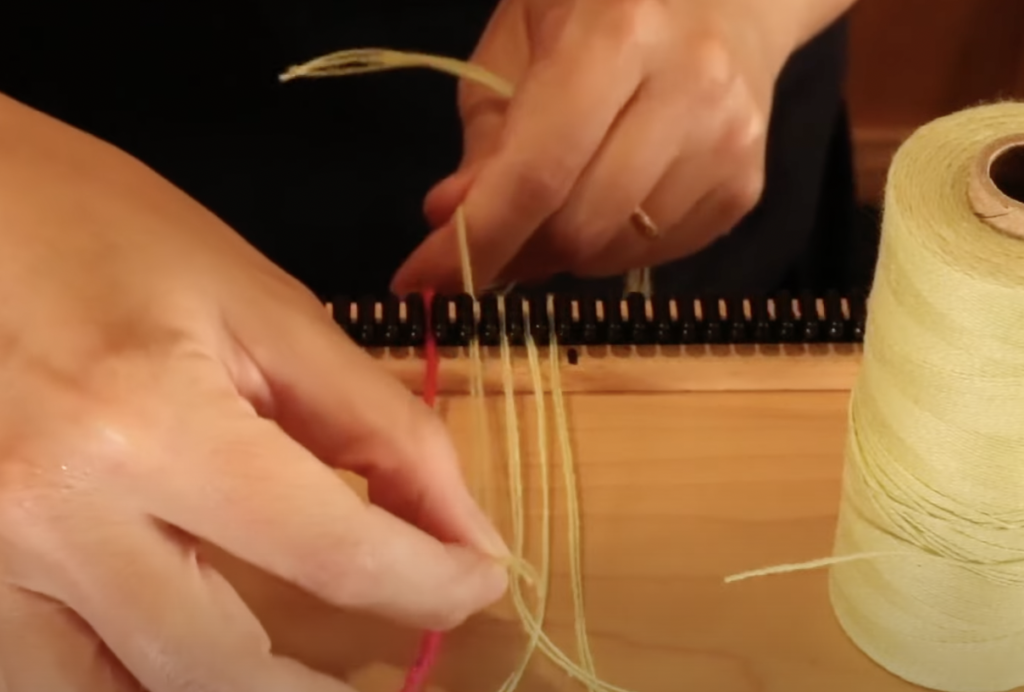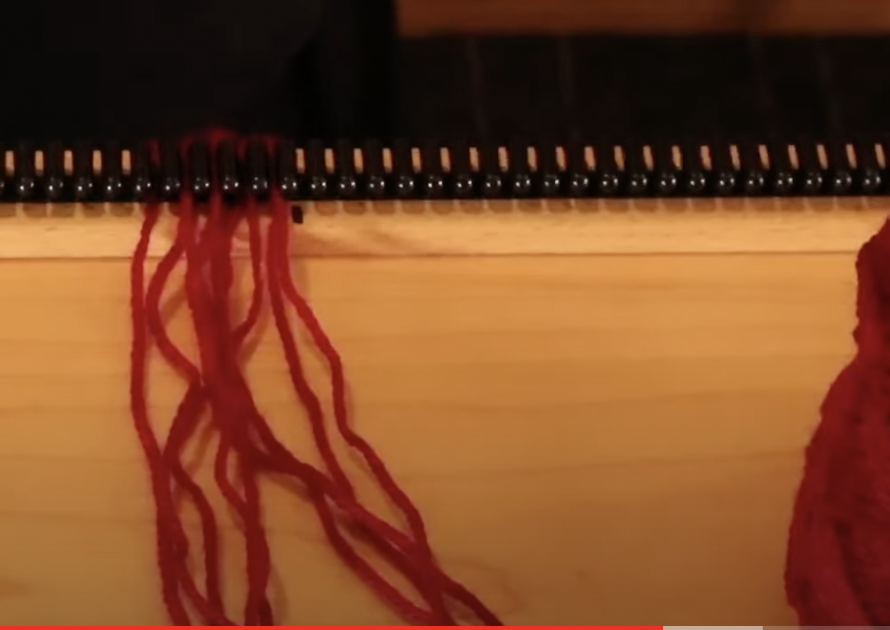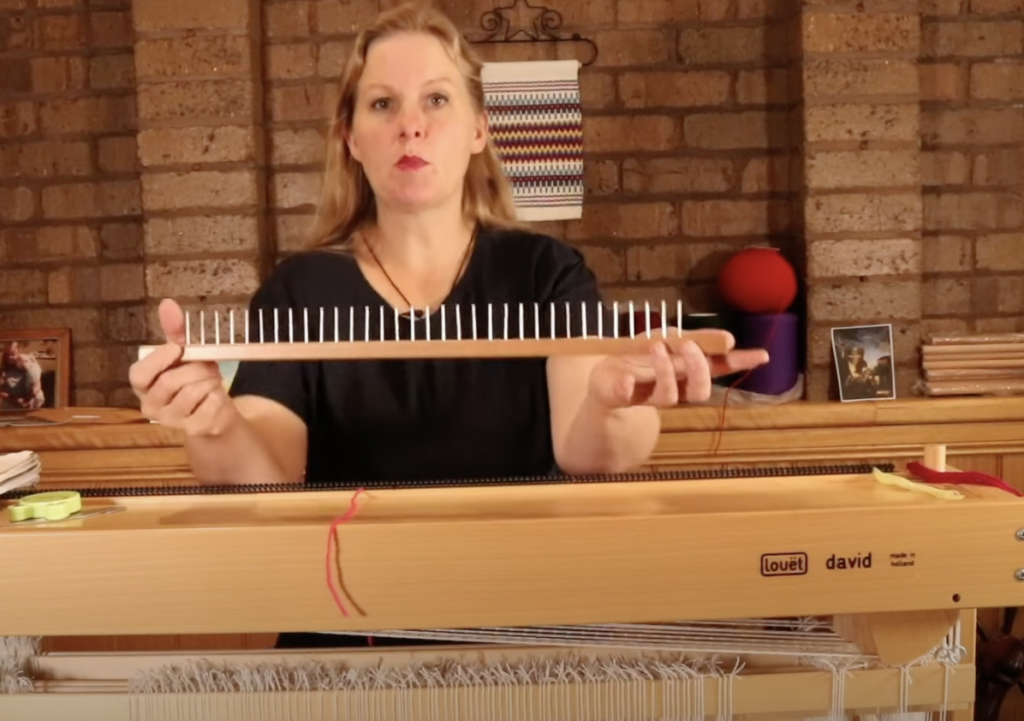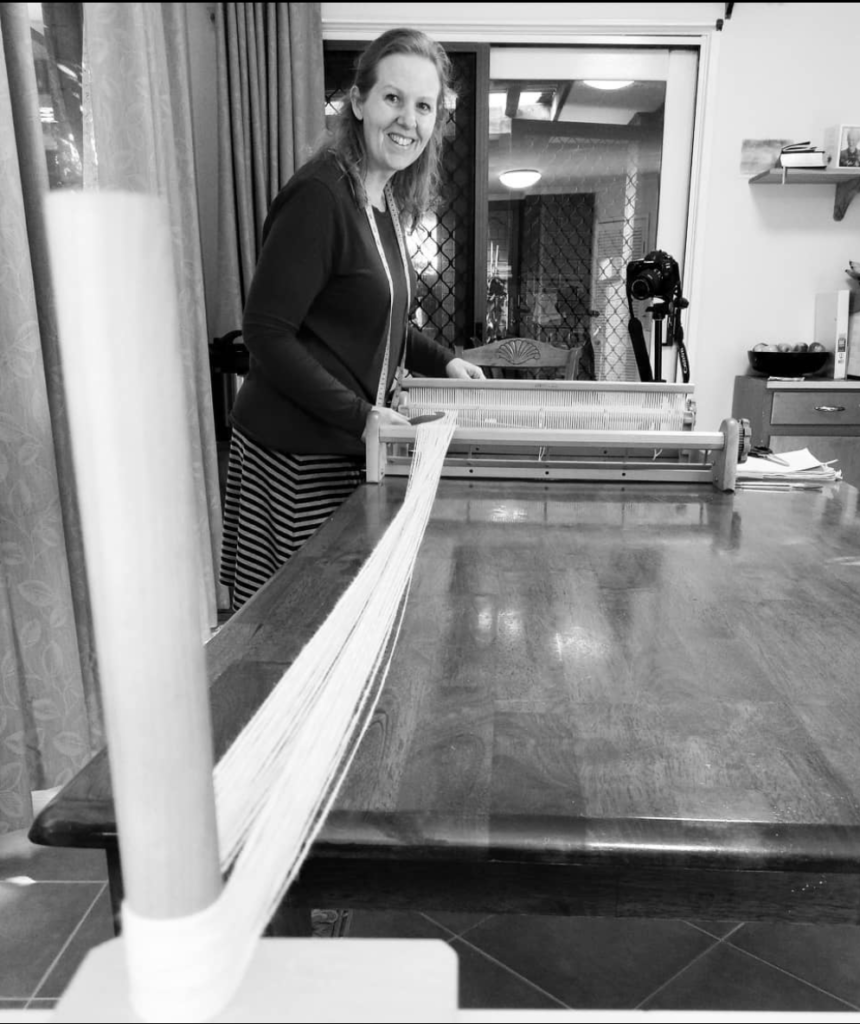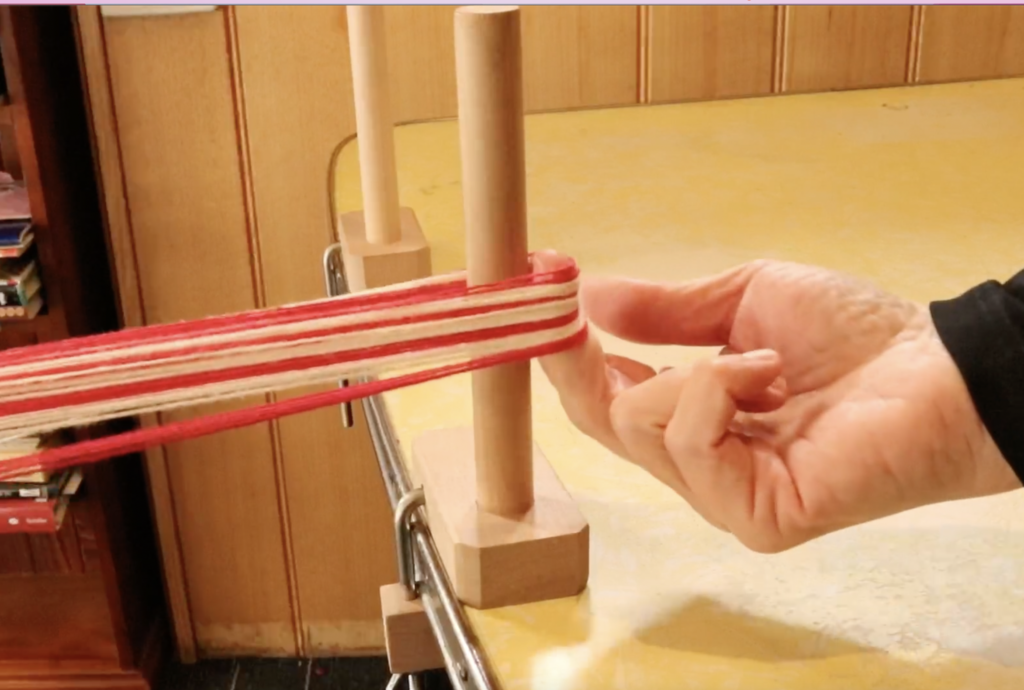Warping a rigid heddle loom might seem a little overwhelming when you’re first starting out — but once you learn the process, it becomes second nature!
In this step-by-step guide, I’ll show you exactly how to warp your rigid heddle loom using the direct warping method, with clear instructions and photos from my beginner rigid heddle weaving course (spoiler alert – there is a discount link at the end of this article 😉)
Whether you’re preparing for your very first rigid heddle project or just need a refresher, this simple method will have you ready to weave in no time. Let’s get started!
Step 1: Calculate Your Warp
Calculating for your next project may not feel like the most fun and glamorous part of weaving, but trust me, it can make or break your success!
I hear a lot of new weavers say “I was never any good at math” or “numbers are confusing to me”. Well, you’re in good company because mathematics was my worst subject at school and oh, how I loathed it!
But the interesting thing is that numbers can become interesting when they have a specific purpose. And it also helps when somebody else lays out a plan for you to follow 🙋♀️
I have a completely free printable PDF calculations sheet for rigid heddle weaving for you. As if that wasn’t enough, I’ve also added a mini class to show you how to use the calculations sheet. Still for free!
Now, you technically can weave a project without calculating first, I even have a member’s only class showing how to do that, but I highly recommend making a habit of getting comfortable with calculations for predictable and repeatable outcomes.
- Tip: Make the math easy by using a calculations sheet or online calculator.
Step 2: Set Up Your Rigid Heddle Loom for Direct Warping
- Place your loom on a sturdy surface (or loom stand) with the front of the loom facing your warping peg. If using a table, clamp the loom (unless you’re weaving with a Lojan Flex – no need to clamp).
- Secure your warping peg at the right distance for your total warp length (Use a measuring tape for correct distancing).
- Get your warp yarn, scissors, and threading hook ready.
- Tip: Try to set up your loom in a place that you can leave and take a break if needed. Time pressure is reduced if your loom setup is not in the way of other home activities.

Step 3: Prepare to Warp your Rigid Heddle Loom
- Mark the width of your project on the heddle with waste yarn.
- Ensure you have everything you need and your project calculation information is nearby to refer to.
- Tie on your warp yarn to the apron rod in line with one of your heddle markers.
- The back apron rod should be fully extended and the brake on.

- Try to have your direct warping peg set up at a fairly similar height to your loom.

Step 4: Warp the Loom
- Using the “reed hook” end of your threading hook, take a loop of yarn through the slot. Place the loop gently over your direct warping peg.
- Walk to the back of the loom, take the warp yarn around the apron rod (either under or over, alternating), through a slot and to the warping peg once more.
- Continue threading through slots and repeating the process until the correct width of warp is complete.
- Tip: Now is not the time to focus on keeping the warp tight. Keep it light, gentle and consistent. The proper tensioning comes a little later.


Step 5: Roll the Warp Onto the Loom
- Place a choke tie near the end of the warp (close to the warping peg) to keep the warp threads together.
- Lift the warp off the peg. It can be helpful to make a warp chain and rest this on the table to keep threads tidy.
- Head to the back of the loom and begin to roll the warp onto the back beam, keeping it under tension.
- After one warp rotation begin to use separators at the back beam. In this class I use cardboard warp separators but my main preference nowadays is to use brown craft paper on a roll.



- After each rotation, come to the front of the loom and pull on the warp. You should feel it give and then tighten up a little.
- Head back behind the loom and repeat.
- Tip: Take your time! If you need a break, go ahead. Warping doesn’t need to be completed in one session.

- When the end of the warp is approximately equal with the front beam, finish rolling on.
- Cut the warp loops and remove the choke tie.
Step 6: Thread your Rigid Heddle Loom for Plain Weave
- Take one warp thread (end) from each slot and thread in a hole to the left.
- Repeat for the rest of the threads.
- You should have a thread in every hole and every slot for the width of your project.
- Tip: Sit nice and close to your heddle while threading to avoid any back strain. I have my loom situated on the stand and bring my office chair on wheels in close so that I feel “tucked in”.

Step 7: Tie On and Adjust Tension
- Tie small groups of warp threads around 1″ wide to the front apron rod, starting in the middle and alternating sides. I use a surgeon’s knot so I can adjust my groups for final tensioning.
- Adjust until all groups are even and firm. Consistency is important at this step!
- Tip: Test by pressing across the thread groups with the palm of your hand – this will show you if any groups are looser than others.

Step 8: Insert a Header
- Weave scrap yarn (or thicker yarn) back and forth a few times then beat down.
- OR
- Use cardboard separators in alternating sheds and beat down.
- This spreads out the warp evenly and helps prevents gaps.



Step 9: You’re Ready to Weave!
- Celebrate! Your rigid heddle loom is now set up and you’re ready to start your first project.
- Each time you warp, it gets easier and faster, trust me!
And that’s it — your rigid heddle loom is warped and ready for weaving! Fun times ahead 🥳
The more you practice, the more familiar warping will become. I hope this beginner rigid heddle weaving step-by-step guide helped make the process simple and stress-free for you.
If you’d like even more help, I walk you through the entire process inside my best selling Rigid Heddle Weaving for Beginners course. This course covers everything you need to know to get weaving on your rigid heddle loom, including yarn choices, sett, loom overview and a beautiful placemats project.
Click on the link below to unlock a special course discount, just for you!
Beginner Rigid Heddle Weaving Course Special Offer…
Would you like a free Rigid Heddle Weaving Setup printable checklist to help you move through these steps? You can download, print and then check off the boxes as you go, ensuring that nothing is missed.
Until next time…
Happy Weaving!
*This post contains affiliate links. For further information, please see my disclosure policy.

